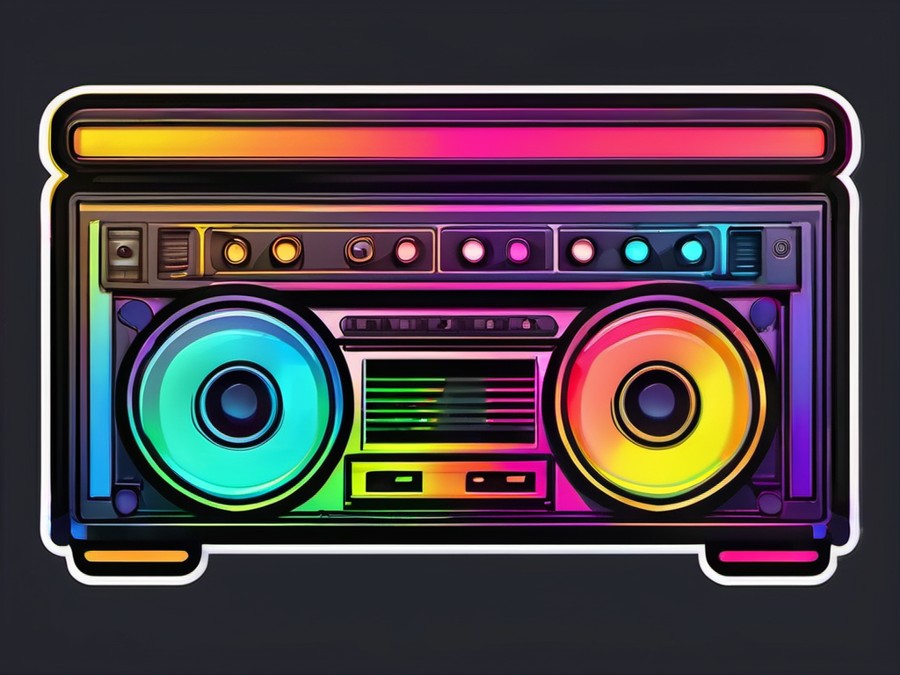· Charlotte Will · Sound Bars · 8 min read
What is a Dolby Atmos sound bar and how does it work?
Discover how a Dolby Atmos sound bar can transform your home entertainment with immersive 3D audio. Learn about the technology, benefits, and how to choose the best sound bar for your needs. Upgrade your movie, gaming, and music experiences with this comprehensive guide.

Ever wondered what makes a movie theatre experience so immersive? The Dolby Atmos sound bar might just be the key to transforming your home entertainment setup. But what exactly is a Dolby Atmos sound bar, and how does it work? Let’s dive in.
Understanding Dolby Atmos Technology
The Evolution of Audio Technology
From the early days of mono sound to the sophisticated surround sound systems of today, audio technology has come a long way. Traditional surround sound systems use multiple speakers placed around the room to create an immersive audio experience. However, Dolby Atmos takes this a step further by introducing height channels that bounce sound off the ceiling, making you feel like you’re right in the middle of the action.
What Makes Dolby Atmos Different?
Dolby Atmos is revolutionary because it introduces the concept of audio objects. Unlike traditional surround sound that relies on specific channels, Dolby Atmos treats sounds as individual objects. This means the system can place these audio objects virtually anywhere in a 3D space, creating a more realistic and immersive environment.
The Science Behind Dolby Atmos
At the heart of Dolby Atmos is advanced signal processing and spatial mapping. Traditional audio systems send waveforms to specific speakers. In contrast, Dolby Atmos uses sophisticated algorithms to map audio objects in a 3D space. This spatial mapping is what allows sounds to move around you, creating an extraordinarily lifelike audio experience.
Introducing the Dolby Atmos Sound Bar
What is a Sound Bar?
A sound bar is essentially an all-in-one speaker system designed to enhance the audio capabilities of your TV. Unlike traditional speaker setups, sound bars are compact and easy to install, making them a popular choice for modern homes.
Dolby Atmos Sound Bar vs Standard Sound Bar
While both standard sound bars and Dolby Atmos sound bars aim to improve your audio experience, there are significant differences. Standard sound bars typically provide stereo or simulated surround sound but lack the advanced spatial processing of Dolby Atmos. In contrast, Dolby Atmos sound bars offer true 3D audio with height channels, up-firing drivers, and advanced digital signal processing (DSP) to create an immersive experience.
Key Components of a Dolby Atmos Sound Bar
Up-firing Drivers
Up-firing drivers are what make Dolby Atmos sound bars special. These drivers point upwards, bouncing sound off the ceiling to create the illusion of height. This is crucial for achieving that 3D audio effect that mimics real-life soundscapes.
Subwoofer Integration
Many Dolby Atmos sound bars come with built-in subwoofers or can be paired with external ones. Subwoofers handle the low-frequency sounds, providing rich bass that enhances the overall audio experience.
HDMI Ports and Connectivity Options
A good Dolby Atmos sound bar should offer multiple connectivity options. HDMI ports are particularly important as they support high-quality audio transmission and can often be used to connect other devices like gaming consoles or Blu-ray players.
How Dolby Atmos Sound Bars Work
Audio Objects and Spatial Mapping
Dolby Atmos uses sophisticated software to map audio objects in a 3D space. This means sounds can be placed not just left, right, or centre, but also above and behind you. For instance, if a scene has a bird flying overhead, the Dolby Atmos system can make you feel like it’s really there.
Up-firing Drivers: The Secret to 3D Audio
The up-firing drivers in a Dolby Atmos sound bar are crucial for creating that height effect. By bouncing sound off the ceiling, they make it seem like sounds are coming from above you. This is what gives Dolby Atmos its unique, immersive quality.
Digital Signal Processing (DSP)
Digital Signal Processing is at the core of Dolby Atmos technology. DSP enhances audio quality, clarity, and spatial accuracy. It ensures that each audio object is placed precisely where it needs to be in the 3D space, creating a seamless and natural audio experience.
Calibration and Setup
To get the most out of your Dolby Atmos sound bar, proper calibration is essential. Most systems come with a microphone and software that guide you through the setup process. This automated calibration adjusts the sound based on your room’s acoustics, ensuring an optimal audio experience tailored to your space.
Experience Dolby Atmos at Home
Enhanced Movie Watching
With a Dolby Atmos sound bar, watching movies at home becomes an experience that rivals the cinema. Immersive soundscapes make you feel like you’re part of the action, whether it’s a high-octane car chase or a quiet, intense dialogue.
Gaming on a New Level
Gamers will find that Dolby Atmos takes their experience to new heights. Immersive gameplay means you can hear your enemies’ footsteps approaching from any direction, giving you a competitive edge.
Music Lovers’ Delight
For music enthusiasts, Dolby Atmos elevates the experience of listening to your favourite tracks. High-resolution audio reveals nuances and details that traditional systems can’t match, making each track sound like a live performance.
Choosing the Right Dolby Atmos Sound Bar
Factors to Consider
When choosing a Dolby Atmos sound bar, consider factors like price, available features, and the size of your room. Larger rooms may require more powerful sound bars to fill the space effectively.
Top Dolby Atmos Sound Bars in 2023
In 2023, there are several top-tier Dolby Atmos sound bars to choose from. Brands like Sonos, Bose, and Samsung offer models that cater to different budgets and needs. For a more detailed look at the best options, check out our guide on What is the best sound bar for TVs under $200?.
Setting Up Your Dolby Atmos Sound Bar
Setting up a Dolby Atmos sound bar is typically straightforward. Most models come with clear instructions and even automated setup processes that walk you through the calibration steps. For additional tips on wireless sound bars, refer to our article What is a wireless sound bar and how to choose the best one?.
Troubleshooting Common Issues
Sound Quality Concerns
If you’re experiencing issues with sound quality, it might be due to improper placement. Ensure your Dolby Atmos sound bar is positioned correctly, and consider the acoustics of your room. For example, hard surfaces like glass and tile can reflect sound differently than soft furnishings.
Connectivity Problems
connectivity issues are common when using HDMI or Bluetooth. Make sure all cables are securely connected and that your devices are compatible. Sometimes, updating the firmware of your sound bar can resolve connectivity problems.
Upgrading Your System
As technology advances, you might want to upgrade your Dolby Atmos system. Adding extra speakers or a subwoofer can enhance the overall audio experience. Keep an eye out for new developments and consider how they might integrate with your existing setup.
The Future of Home Audio
Emerging Trends in Sound Technology
The future of home audio looks bright with emerging trends like voice control and AI integration. Imagine commanding your sound bar to play your favourite track or adjust the volume with just your voice.
Integration with Smart Homes
Dolby Atmos sound bars are increasingly integrating with smart home systems. This means seamless control over your audio experience using voice commands or smartphone apps. Voice control and seamless integration are becoming standard features in modern sound bars.
The Role of Dolby Atmos in the Future
Dolby Atmos is poised to remain a key player in the world of home audio. With its ability to create immersive, 3D soundscapes, it continues to set the standard for high-quality audio experiences. As technology advances, expect Dolby Atmos to evolve and adapt, keeping it at the forefront of home entertainment.
Conclusion
Embracing a Dolby Atmos sound bar can transform your home entertainment setup, providing an immersive audio experience that rivals a cinema. With advanced features like up-firing drivers, DSP, and spatial mapping, Dolby Atmos delivers a level of audio quality that is unparalleled. Whether you’re watching movies, gaming, or listening to music, a Dolby Atmos sound bar elevates every experience.
FAQs
Can I use a Dolby Atmos sound bar with my TV?
Yes, most Dolby Atmos sound bars are designed to work seamlessly with modern TVs. They typically require an HDMI connection and may also support Bluetooth or other wireless technologies.
How many Dolby Atmos speakers do I need for optimal sound?
The number of speakers you need depends on the size and acoustics of your room. While some setups may require multiple speakers, a high-quality Dolby Atmos sound bar can often provide an optimal experience on its own.
Are there any downsides to using a Dolby Atmos sound bar?
One potential downside is the cost, as high-end Dolby Atmos sound bars can be expensive. Additionally, proper placement is crucial to achieve the best audio experience.
Can I connect multiple devices to my Dolby Atmos sound bar?
Yes, many Dolby Atmos sound bars come with multiple HDMI ports and Bluetooth connectivity options that allow you to connect various devices like gaming consoles, Blu-ray players, and smartphones.
How important is room acoustics for a Dolby Atmos sound bar?
Room acoustics play a significant role in the performance of your Dolby Atmos sound bar. Hard surfaces can reflect sound differently, so consider adding soft furnishings to improve acoustics. For more details on optimal setup, refer to our article What is a monitor privacy filter and how does it work?.




